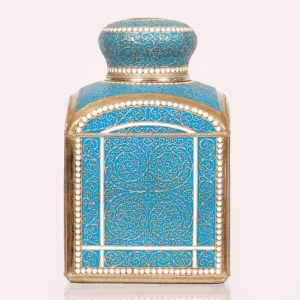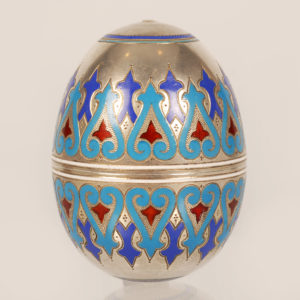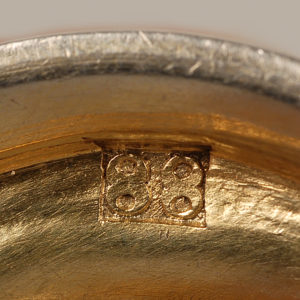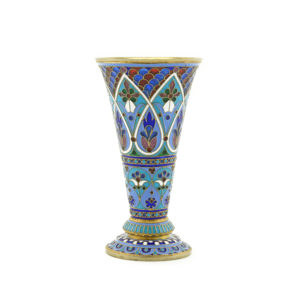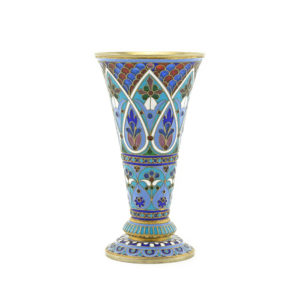Our Antiques
Russian Imperial Porcelain Factory Military Service Plate
To order by phone or get more info call us at +1 (425) 271-8950
Description
A Russian plate from the military service begun in 1907, Imperial Porcelain Factory, ST Petersburg, 1910. Circular, the cavetto painted with a view of a soldier of the Volinsky, or Volhynian Life-Guards Regiment (Волынский лейб-гвардии полк) in the field in spring, shown standing near a small lake, other members of the regiment on horseback visible in the background, the gilded border polished & engraved with a band of berry laurel leaves with the Imperial State Seal, the underside with gilded foot & border, with black overglaze Russian inscription reading ‘Volhynian Life Guards Regiment, 1893’ (Волынский лейб-гвардии полк 1893 г.) & ‘From a design by V.V. Mazurovsky / Painted by Ya. Goryaev 1910 (с рис. В.В. Мазуравского / испол. Я. Горяев 1910 г.)’, with green stamped factory mark with the Imperial cypher of Nicholas II dated 1907. Excellent condition. Diameter: 9 1/2″ (24.1 cm).
This plate is from the final series of military plates made at the Imperial Porcelain Factory during the reign of Nicholas II. The central images were based on images of various Russian regiments from the period of Alexander III by battle painter Viktor Mazurovsky (1859-1944). After studying with the well-known Bogdan Villevalde at the Imperial Academy of Arts, Mazurovsky was made an official painter of the Russian Imperial Army, traveling with various regiments & completing a cycle of canvases based on his observations. He was stationed at the front during both the Russo-Japanese War & his paintings from that conflict brought him to the attention of the Nicholas II. The emperor had them exhibited in Tsarskoe Selo in 1907 & purchased a significant part of the series. In that same year, he was asked to produce the designs that would become the last series of military plates. The borders were designed by Rudolf Vilde von Vildeman (1868-1937), the head of the factory’s painting workshop who continued to work at the factory after the 1917 Revolution & who painted a great number of important designs under the name Rudolf Vilde. The original design is now in the collection of the Hermitage. The original design is now in the collection of the Hermitage & includes the factory directors notes about the small changes Emperor Nicholas II requested. (See Tamara Kudriavtseva, Russian Imperial Porcelain, St. Petersburg: Slaviia, 2003, p. 217.) According to more recent research by Hermitage curator Ekaterina Khmelnitskaya, the commission for the service from the emperor was dated 31 March 1907. Like several earlier series, two examples of each image was made. By 1912, 142 plates had been finished. Another 11 were added in 1913. A large number of the plates from the series are now in the collection of the Russian Museum in St Petersburg. On the series, see Geraldika na russkom farfore, S-Peterburg: Ermitazh, 2008, pp. 26-28, 139-142.
Contact Us
Subscribe to receive our newsletter and new acquisitions



